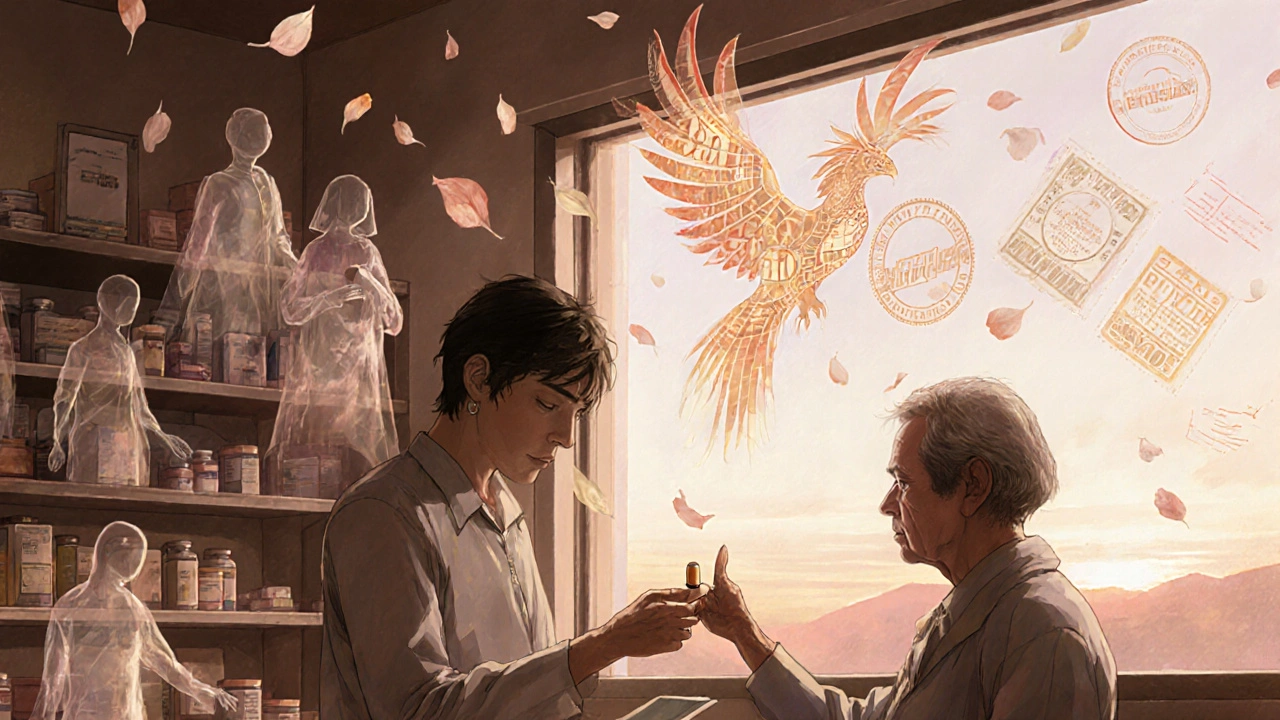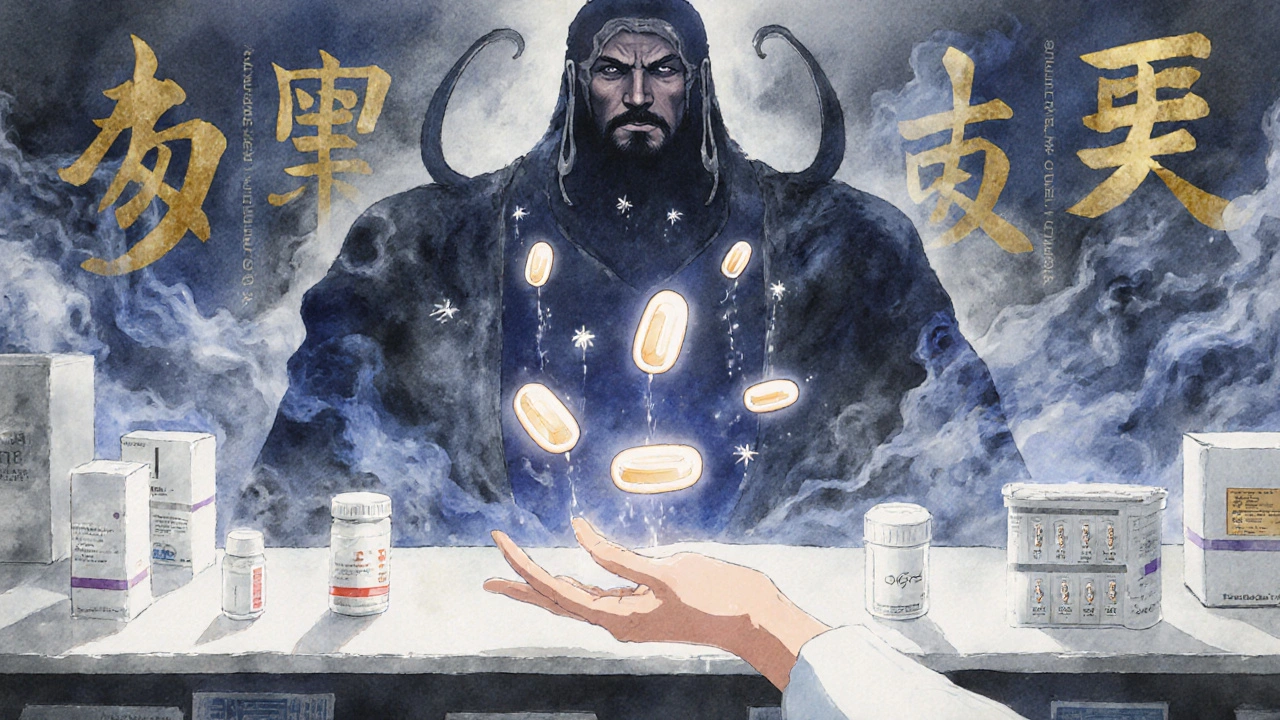When you pick up a prescription at the pharmacy, there’s a good chance you’re not getting the brand-name drug your doctor wrote on the slip. In the U.S., generic drugs make up 90.1% of all prescriptions filled. That’s higher than Canada, the UK, or Germany. But here’s the twist: even though generics dominate prescriptions, the U.S. still pays more for drugs overall than any other country. Why? Because the branded drugs you don’t take are astronomically expensive. Meanwhile, in countries like South Korea and China, the government steps in to crush prices-sometimes so hard that manufacturers can’t stay in business.
How Generics Work: The Basic Idea
Generic drugs are chemically identical to brand-name drugs. They contain the same active ingredient, work the same way in your body, and are held to the same safety standards. The only differences? They don’t have flashy packaging, expensive advertising, or a patent. Once a brand-name drug’s patent expires, any qualified manufacturer can produce a generic version. That’s when prices usually drop-often by 80% or more.
The U.S. made this legal in 1984 with the Hatch-Waxman Act. It created a fast-track approval path called the Abbreviated New Drug Application (ANDA). Instead of running new clinical trials, generic makers just had to prove their version worked the same as the original-through bioequivalence studies. That cut development time and cost dramatically. Today, the FDA has approved over 11,342 generic products. That’s not just a number-it means millions of people with diabetes, high blood pressure, or depression are taking affordable versions of life-saving drugs.
The U.S. Model: High Volume, Low Prices, But Still Expensive Overall
The U.S. is the world’s biggest market for generics. Nine out of ten prescriptions are filled with them. Medicare saved $142 billion in 2024 just from generic use-that’s $2,643 per beneficiary. The FDA’s Orange Book lists every approved generic, and the Competitive Generic Therapy (CGT) program gives companies 180 days of exclusivity if they’re the first to challenge a patent on a hard-to-make drug. Zenara Pharma’s Sertraline Hydrochloride capsules, approved in August 2025, are a recent example.
But here’s the catch: even though generics are cheap, the rest of the drug market isn’t. Branded drugs cost 3 to 10 times more in the U.S. than in other wealthy countries. That’s why overall drug spending stays high. The U.S. public-sector net prices for prescriptions are only 18% lower than other developed nations-not because generics are cheaper, but because the branded drugs are so expensive. And pharmacy benefit managers (PBMs) sometimes make it worse. Some patients pay higher copays for generics than for brand names because of how insurance formularies are structured. Reddit users in r/AskDocs report that 63% of patients are frustrated by this.
Europe: Harmonized Rules, Fragmented Prices
The European Union has one of the most complex systems. The European Medicines Agency (EMA) approves generics for all 27 member states. That sounds efficient. But then each country sets its own price and decides whether insurance will pay for it. The result? Two identical generic pills can cost 300% more in one country than another.
Germany uses mandatory substitution-pharmacists can swap a brand for a generic unless the doctor says no. They’ve hit 88.3% generic use by volume. Italy? Only 67.4%. Why the gap? It’s not about wealth or need. It’s about policy design. Some countries have strong public awareness campaigns. Others don’t. The European Commission is trying to fix this with a new Pharmaceutical Package expected in late 2025. It aims to shorten generic market entry by 12-15% and encourage the first generic to enter the market with better incentives.
Meanwhile, the Netherlands uses a clever trick called external reference pricing. They look at prices in France, Belgium, the UK, and Norway-and set their own price lower than all of them. It’s not about fairness. It’s about strategy. They’re playing the system to get the lowest possible price.

China: The Price-Cutting Machine
China’s Volume-Based Procurement (VBP) policy is the most aggressive generic pricing system in the world. Starting in 2018 as a pilot and going national by 2020, the government holds centralized bidding for bulk drug purchases. Hospitals must buy from the lowest bidder. The result? Average price cuts of 54.7%. In some cases, like certain blood pressure meds, prices dropped 93%.
It’s working for patients. On WeChat forums, 89% say out-of-pocket costs for chronic disease drugs dropped by 63%. But there’s a dark side. A 2025 survey by the China Generic Pharmaceutical Association found that 23% of manufacturers are selling VBP drugs at a loss. Some stopped production. In 2024, Amlodipine besylate-a common blood pressure pill-was in short supply across 12 provinces for six to eight weeks. Patients weren’t getting their meds because the price was too low to make them profitably.
India: The Pharmacy of the World
India makes 20% of the world’s generic drugs by volume. It’s the go-to supplier for low-income countries and even for U.S. pharmacies. How? India uses compulsory licensing under Section 84 of its Patents Act. That means if a drug is too expensive or not available, the government can let a local company make it anyway-even if the patent is still active.
But quality is a growing concern. Between 2022 and 2024, FDA warning letters to Indian generic manufacturers jumped 17%. Many of those letters cited data integrity issues-faked test results, missing records, sloppy labs. Physicians on MedIndia Network say 58% of them have seen inconsistent bioavailability in locally made generics, especially for drugs like warfarin or phenytoin, where even small differences can be dangerous.
South Korea: The Goldilocks Approach
South Korea didn’t want to be China or the U.S. So they built something in between. In 2020, they launched the “1+3 Bioequivalence Policy.” Only three generic versions of a drug can be approved using the same bioequivalence data. After that, new entrants must do their own costly studies. That cut redundant generics by 41% between 2020 and 2024.
Then came the Differential Generic Pricing System. Generics that meet both quality and price standards get 53.55% of the brand’s price. Those meeting only one standard get 45.52%. The rest? Just 38.69%. It’s a way to reward good manufacturers and punish bad ones. The result? Lower prices and better quality control. But it also reduced new generic launches by 29% compared to the previous five years. Fewer competitors means less pressure to drop prices further.

The Global Trade-Off: Affordability vs. Innovation
Every country is trying to solve the same problem: How do you make medicines affordable without killing the industry that makes them?
Dr. Sarah Peterson from Duke-Margolis says the U.S. got it right. High generic use, low generic prices, and still enough profit for innovators to invest in new drugs. Professor Klaus Reinhardt from the London School of Economics calls Europe’s system a mess-identical drugs, wildly different prices. Dr. Anant Jani from the Access to Medicine Foundation warns that when prices are slashed too hard, quality suffers. The FDA’s import alerts for quality violations jumped from 1,247 in 2020 to 2,183 in 2024.
The International Generic and Biosimilars Association (IGBA) says the answer might be global standards. Right now, a generic approved in the U.S. might need another full set of tests to be sold in the EU or Japan. If countries recognized each other’s approvals, new generics could hit markets 18 to 24 months faster. That’s huge for patients in developing countries.
What’s Coming Next?
Between 2025 and 2030, $217-236 billion in branded drug sales will lose patent protection. That’s the biggest wave of generic opportunity in history. But will countries be ready?
The U.S. Inflation Reduction Act will start negotiating prices for 10-20 high-cost drugs each year by 2028. That could push more patients toward generics. China’s Phase 4 VBP expansion in January 2026 will add 150 more drugs-and winning bidders must supply 80% of hospital demand at prices 65% below current levels. That’s going to squeeze manufacturers even harder.
McKinsey predicts the number of global generic manufacturers will drop from 3,500 to about 2,200 by 2030. Only the ones with real scale, strong quality control, and integrated supply chains will survive. The rest? They’ll go under.
What Patients Need to Know
If you’re taking a generic drug, you’re likely saving hundreds or thousands a year. Most people report no difference in how the drug works. But if you’re on a narrow therapeutic index drug-like warfarin, levothyroxine, or phenytoin-stick with the same generic brand. Even small differences in absorption can matter.
Ask your pharmacist if your insurance formulary is pushing you toward a more expensive generic. If your copay for a generic is higher than for the brand, speak up. And if you notice your medication isn’t working the same way, tell your doctor. It’s not always the drug-it could be a batch change.
Global policies aren’t perfect. But they’re getting better. The goal isn’t to make drugs free. It’s to make them accessible. And right now, generics are the most powerful tool we have to do that.
Are generic drugs really as effective as brand-name drugs?
Yes. By law, generic drugs must contain the same active ingredient, strength, dosage form, and route of administration as the brand-name version. They must also meet the same strict quality and safety standards set by regulatory agencies like the FDA or EMA. Bioequivalence studies prove they work the same way in the body-absorbing at the same rate and to the same extent. Millions of patients worldwide use generics without any loss of effectiveness.
Why do some people say generics don’t work as well?
Sometimes, it’s not the drug-it’s the switch. If you’ve been on a specific brand for years and then your pharmacy switches you to a different generic, you might notice a slight difference in how you feel. That’s because generics can have different inactive ingredients (like fillers or dyes), which may affect how the drug is absorbed in sensitive individuals. This is most common with drugs that have a narrow therapeutic index, like seizure medications or blood thinners. If you notice changes, talk to your doctor. Don’t assume the generic is bad-it might just be a different version.
Why are generic drugs cheaper if they’re the same?
Branded drugs cost a lot because the company had to pay for research, clinical trials, marketing, and patent protection. Generics skip all that. They don’t need to repeat expensive studies-they just prove they’re equivalent. That cuts development costs from $1 billion+ down to around $5 million. Plus, once multiple companies start making the same drug, competition drives prices down. It’s not about quality-it’s about who pays for the upfront risk.
Can generic drug quality vary between countries?
Yes. While all countries have regulatory standards, enforcement varies. The U.S. FDA and EU EMA have strong inspection systems. In some emerging markets, oversight is weaker. Between 2022 and 2024, the FDA issued 17% more warning letters to Indian manufacturers due to data integrity issues. That doesn’t mean all Indian generics are unsafe-but it does mean you should be cautious if you’re buying from unfamiliar sources. Stick to generics approved by your country’s health authority.
Will global generic policies change how I get my medication?
Possibly. In countries with mandatory substitution laws (like Germany), you’ll automatically get the generic unless your doctor says otherwise. In the U.S., insurance formularies may shift which generic you’re given based on price. In China, you might face shortages if a manufacturer stops making a drug because the price is too low. But overall, the trend is toward more access and lower cost. The biggest change you’ll notice is fewer surprises in your prescription bill.

